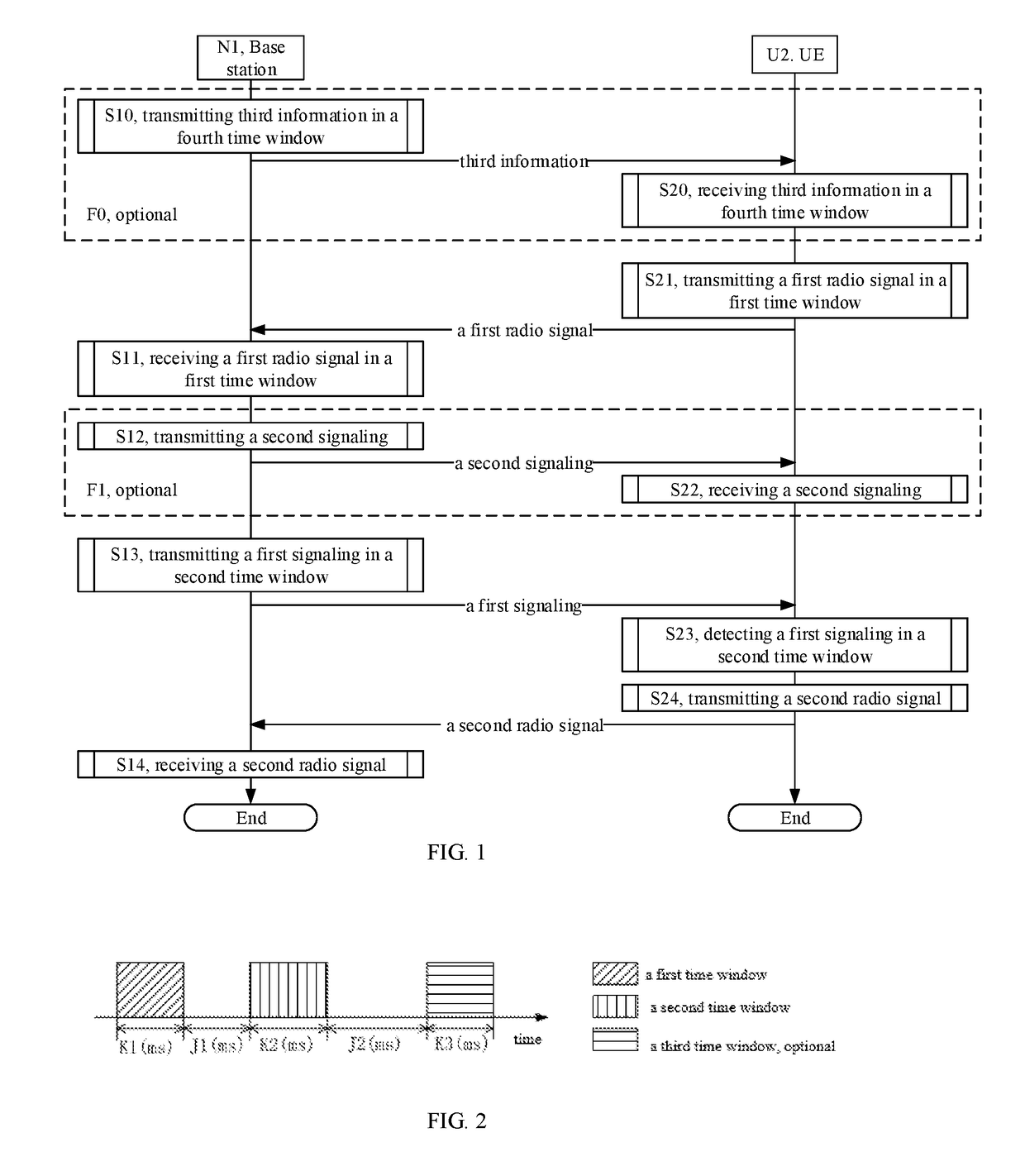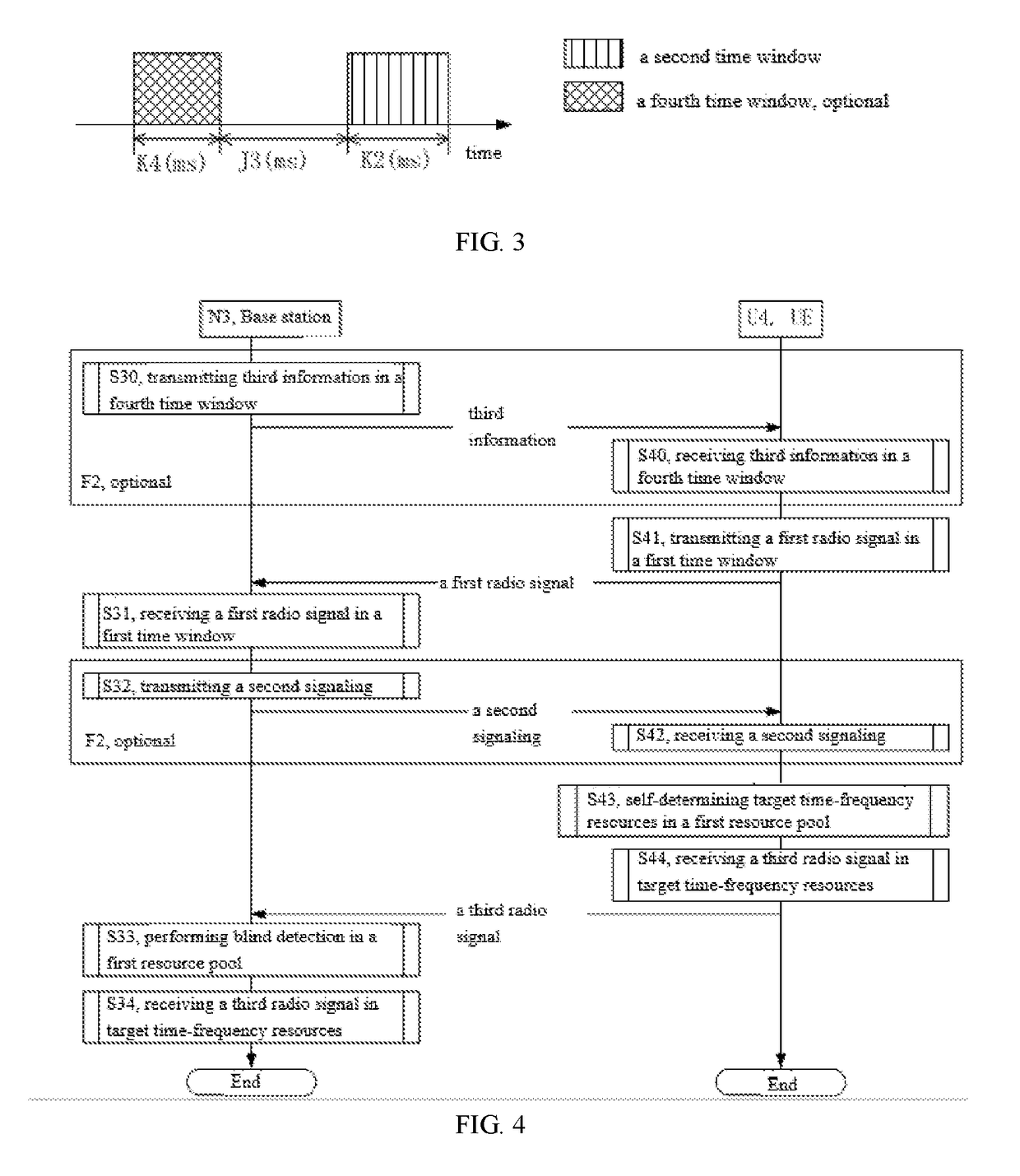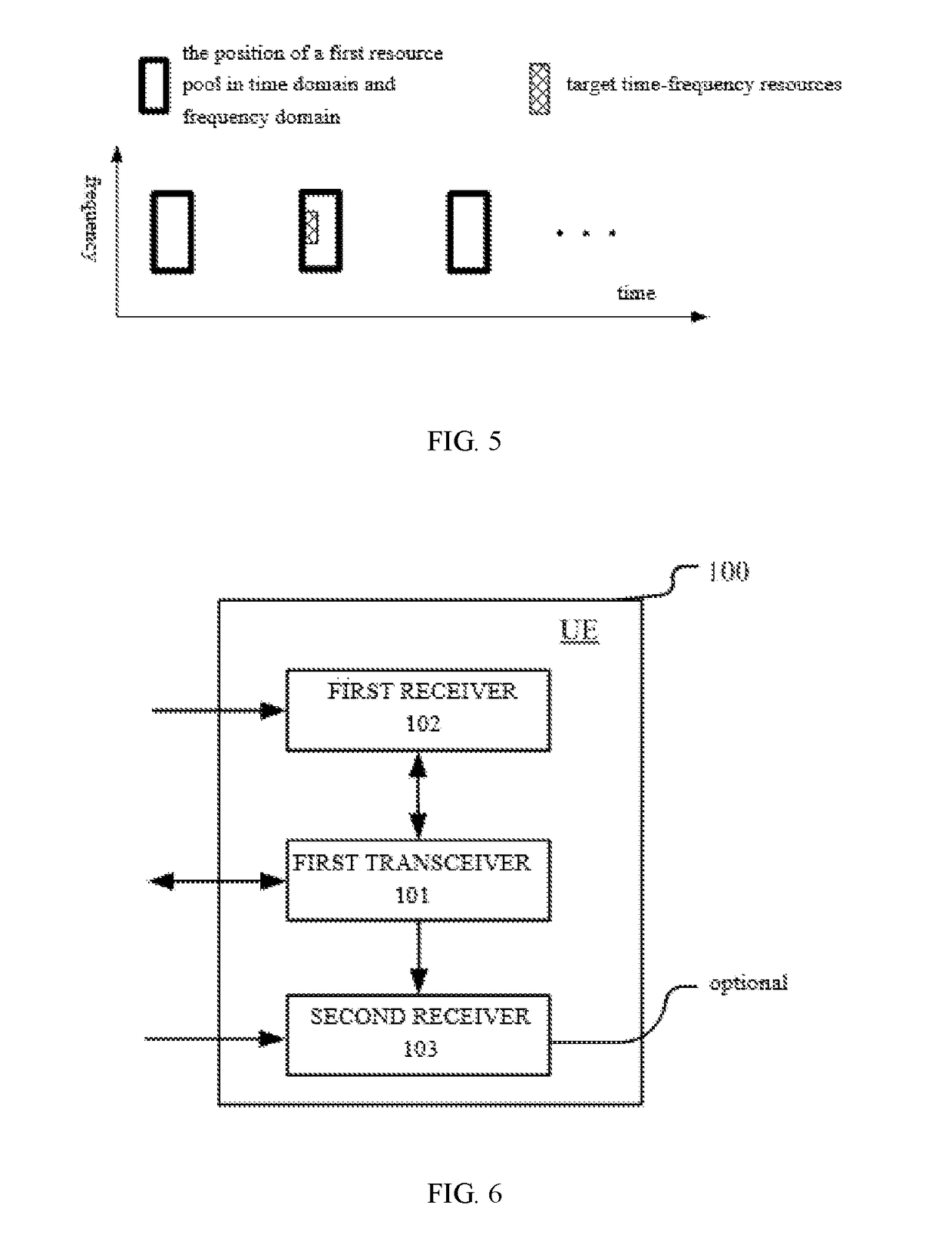Method and device in wireless communication
a wireless communication and radio signal technology, applied in wireless communication, signalling characterisation, high-level techniques, etc., can solve the problems of reducing transmission efficiency, affecting certain performance, increasing uplink transmission delay, etc., and reducing transmission delay, not reducing power consumption, increasing the standby time of the ue
- Summary
- Abstract
- Description
- Claims
- Application Information
AI Technical Summary
Benefits of technology
Problems solved by technology
Method used
Image
Examples
embodiment 1
[0185]Embodiment 1 illustrates a flow chart of uplink transmission, as shown in FIG. 1. In FIG. 1, base station N1 is the maintenance base station of the serving cell of UE U2, and the steps identified in block F0 and block F1 are optional, respectively.
[0186]The base station N1 transmits third information in a fourth time window in step S10, receives a first radio signal in a first time window in step S11, transmits a second signaling in step S12, transmits a first signaling in a second time window in step S13, and receives a second radio signal in step S14.
[0187]The UE U2 receives third information in a fourth time window in step S20, transmits a first radio signal in a first time window in step S21, receives a second signaling in step S22, detects a first signaling in a second time window in step S23, and transmits a second radio signal in step S24.
[0188]In Embodiment 1, the first radio signal comprises at least first information between first information and first data; the firs...
embodiment 2
[0196]Embodiment 2 is a schematic diagram illustrating the relative positions of the first time window, the second time window and the third time window according to an embodiment of the present disclosure, as shown in FIG. 2. In FIG. 2, the oblique line identifies the first time window, the vertical line identifies the second time window, and the horizontal line identifies the third time window, wherein the third time window is optional.
[0197]In FIG. 2, the second time window is behind the first time window in the time domain, and the third time window is behind the second time window in the time domain. The first time window occupies K1 (ms) in the time domain, the second time window occupies K2 (ms) in the time domain, and the third time window occupies K3 (ms) in the time domain. The end time of the first time window is spaced from the start time of the second time window by J1 (ms), and the end time of the second time window is spaced from the start time of the third time windo...
embodiment 3
[0198]Embodiment 3 illustrates a schematic diagram illustrating the relative positions of the second time window and the fourth time window according to an embodiment of the present disclosure, as shown in FIG. 3. In FIG. 3, the vertical line identifies the second time window and the cross line identifies the fourth time window, wherein the fourth time window is optional.
[0199]As shown in FIG. 3, the second time window is behind the fourth time window in the time domain, and the second time window occupies K2 (ms) in the time domain, and the fourth time window occupies K4 (ms) in the time domain. The end time of the fourth time window is spaced from the start time of the second time window by J3 (ms), where K2, K4 and J3 are all positive integers.
PUM
 Login to View More
Login to View More Abstract
Description
Claims
Application Information
 Login to View More
Login to View More - R&D
- Intellectual Property
- Life Sciences
- Materials
- Tech Scout
- Unparalleled Data Quality
- Higher Quality Content
- 60% Fewer Hallucinations
Browse by: Latest US Patents, China's latest patents, Technical Efficacy Thesaurus, Application Domain, Technology Topic, Popular Technical Reports.
© 2025 PatSnap. All rights reserved.Legal|Privacy policy|Modern Slavery Act Transparency Statement|Sitemap|About US| Contact US: help@patsnap.com



